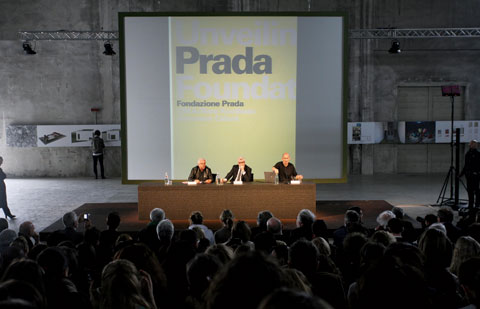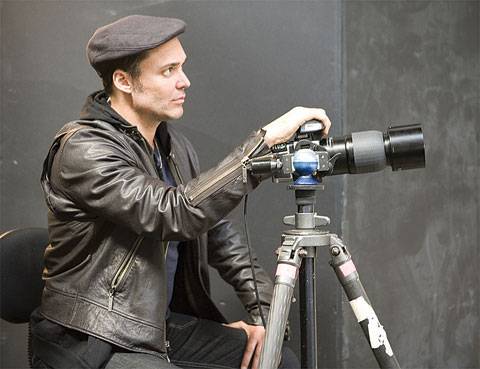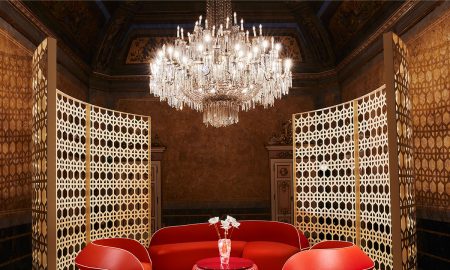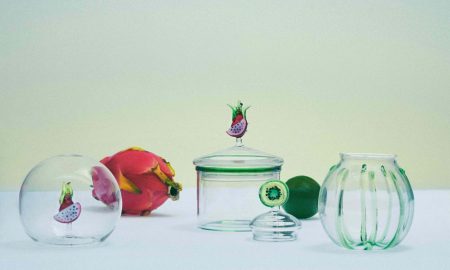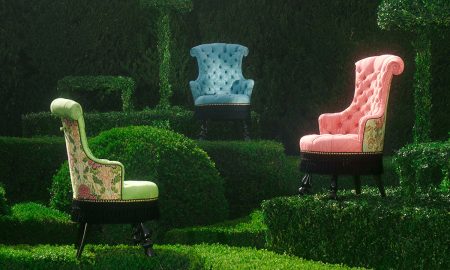From 2001 onwards the Prada Foundation expanded its curatorial focus to include art, architecture, philosophy, science, design, and cinema.
Miuccia Prada and her husband Patrizio Bertelli’s Prada Foundation opened in Milan in 1993, and since then, the foundation has reached international art and cultural communities with their daring ventures and collaborations. Like major art institutions-who, unlike this foundation, tend to have limited funds-the artists that the Prada Foundation has embraced come from, or have since moved into, higher echelons of the contemporary art scene. The foundation has presented shows of Louise Bourgeois, John Baldessari, Anish Kapoor, Sam Taylor-Wood, Steve McQueen, Carsten Höller, Francesco Vezzoli, and more than a dozen other artists. Every year, at least two artists are commissioned to create large-scale works, work that these artists might have dreamed of doing but had neither the resources nor the occasion to do. The resulting pieces are presented in the industrial space on the Via Fogazzaro (where Prada also holds its fashion shows several times a year).
The Foundation has also commissioned work that exist outside of Via Fogazzaro, shows such as Dan Flavin’s permanent installation for the church of Santa Maria Annunziata in Chiesa Rossa in Milan and Laurie Anderson’s Dal Vivo, a project involving the San Vittore Prison, also in Milan. In 2001, the Prada Foundation organized California-based artist Barry McGee’s first solo exhibition in Italy, jumpstarting the artist’s stateside career. The foundation has even supported artist Tom Sachs, whose work criticizes industries like fashion and luxury goods, with objects that are a biting parody of consumerism and luxury goods companies’ aggressiveness to fuel a product-driven culture. Sachs puts luxury-brand names on things like guillotines, toilets, and guns.
From 2001 onwards the Prada Foundation expanded its curatorial focus to include art, architecture, philosophy, science, design, and cinema. For example, the foundation’s cinema initiatives have focused on the rediscovery and restoration of historic films by Italian, Chinese, Japanese, and Russian directors, working in collaboration with the Venice Film Festival, the Tribeca Film Festival in New York, and the Giorgio Cini Foundation in Venice. And in 2003 the Prada Foundation signed a long-term agreement for cultural and scientific collaboration with the University of Vita-Salute San Raffaele, Milan, supporting the faculty of the philosophy department. From 2003 to 2006 the Prada Foundation organized a series of interdisciplinary discussions with the University of Milan, with titles like Philosophy and History: Reconsidering September 11, Art and Terror, and The Philosophical Dialogue between Europe and Japan on 20th-Century Thought.
After more than 15 years of existence-and with an incredible list of successful projects and collaborations-the Prada Foundation decided to expand its space. A future home has just been contracted in collaboration with Dutch architect Rem Koolhaas and his firm OMA to move the foundation to Largo Isarco, an early 20th century industrial site south of Milan that belongs to one of Milan’s first manufacturing companies. Upon its completion in some four or five years hence, OMA will redevelop six of the existing warehouses and property into the “Great Hall” for storage and display, installation galleries, office space, the “Haunted House”- an unusual vertical structure with various rooms and balconies, which will be decorated with changing interior design as a setting for specific works-the Prada Archive, and, last, the Luna Rossa Archive. OMA will also add an exhibition building, auditorium, and tower to the existing structure to house selections of works from the collection, and use existing structures to create an expansive open-air courtyard. It will be a unique approach to the idea of the co-existence of contemporary architecture with the regeneration of an historic area, a particularly poignant relationship given the history of industrial development in Milan that continues to the present day. Koolhaas commented on this relationship saying, “The new Foundation is intended as a collection of artifacts that encounters a collection of architectural typologies. Not only will the range of spatial conditions be extended, but also the range of contents itself. Apart from spaces for assembly and performance, both Prada’s and Luna Rossa’s archives will be opened, establishing a continuity of creative and intellectual effort.”
The new auditorium will make it possible to host a variety of festivals, concerts, and theater performances, as well as symposia and lectures on literature, music, and theater. It will also have a multimedia laboratory, enabling the foundation’s communication with the world and allowing it to attain an even more global dimension. The auditorium will be used for theater performances, films, and conferences. Italian art critic and Guggenheim curator Germano Celant will continue as the director of the foundation.
The incredible efforts by the Prada Foundation is an example of an art/fashion relationship that’s not a parasitic mode of existence with one singular focus in mind: to make immense commercial profit and elevate status. Inevitably (and, of course, consciously) there may be a marketing-by-association end product here, but the works commissioned by this institution are being backed without any promise or expectation of endorsing their product, an honorable and strategic position. While this isn’t to say that the company never commissions work to go into an ad or onto a handbag (as seen in Prada’s various ad campaigns, including their recent collaboration with Los Angeles artist and comic illustrator James Jean), it’s not the company’s sole agenda.







